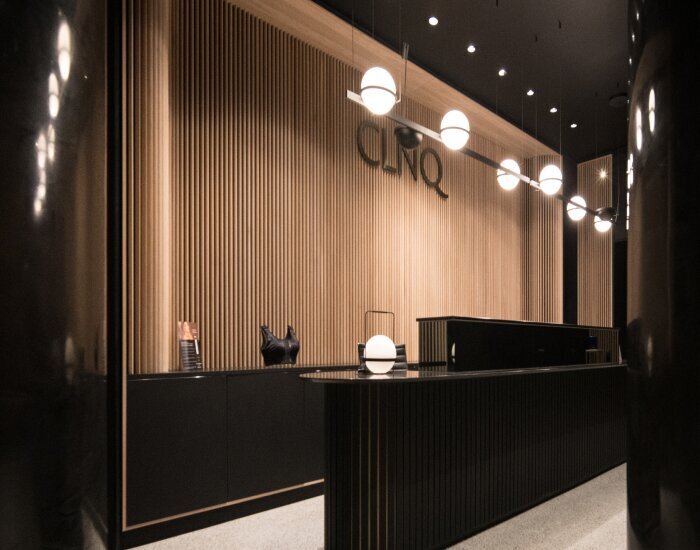Capsular contracture is a condition that can affect individuals with breast implants, leading to a tightening of the scar tissue or “capsule” that forms naturally around the implant. This condition can cause discomfort, aesthetic concerns, and in some cases, the need for further surgery. But how do you know if you have capsular contracture, and what can be done about it?
What Is Capsular Contracture?
After a breast implant procedure, the body naturally forms a capsule of scar tissue around the implant. This is part of the body’s healing process and is generally harmless. However, in cases of capsular contracture, this capsule becomes thickened, hard, and can contract around the implant, causing it to feel firm, look distorted, and sometimes become painful.
Capsular contracture is often graded on the Baker Scale:
1. Grade I: The breast looks and feels soft and natural.
2. Grade II: The breast feels slightly firm but appears normal.
3. Grade III: The breast is firm, appears visibly distorted or misshapen.
4. Grade IV: The breast is hard, painful, and has significant distortion.
Let’s explore the symptoms, causes, and treatment options for capsular contracture, as well as how you can determine if you may have this condition.

Signs and Symptoms of Capsular Contracture
Recognizing the symptoms of capsular contracture early can make a significant difference in treatment options and outcomes. Common symptoms include:
1. Hardening of the Breast
One of the first signs is a noticeable firmness or hardening around the implant. This can occur in one or both breasts and may feel unnatural compared to the original texture.
2. Change in Breast Shape
If the breast becomes distorted, appearing more round or even unusually elevated, this could be a sign of capsular contracture. The breast may start to look different in photographs or feel out of alignment when looking in the mirror.
3. Pain or Discomfort
Pain is a common symptom in more advanced stages of capsular contracture. Some patients describe a feeling of tightness or pressure that can increase with time.
4. Changes in Implant Position
As the capsule tightens, the implant can shift. This change is often visible and can make one breast sit higher or appear more pronounced than the other.
Causes of Capsular Contracture
The exact causes of capsular contracture are not fully understood, but research points to several factors that may increase the risk. Studies in plastic surgery journals highlight some of the following primary causes:
Bacterial Contamination and Biofilm Formation
Research suggests that bacterial contamination can lead to a low-grade infection around the implant, leading to an inflammatory response that may encourage excessive scar tissue formation. This bacterial presence may be linked to biofilms—colonies of bacteria that adhere to the implant surface and are resistant to antibiotics. The body’s response to these biofilms can initiate capsular contracture.
Hematoma and Seroma Formation
Blood or fluid accumulation around the implant, known as hematoma or seroma, has been associated with capsular contracture. When these collections are not adequately drained, they can lead to inflammation and a stronger immune response, potentially increasing the likelihood of contracture.
Implant Surface and Placement
Studies have found that the type of implant surface (textured vs smooth) and the placement (submuscular vs subglandular) can impact capsular contracture rates. Textured implants, for instance, tend to have a lower risk of contracture than smooth implants. Additionally, placing the implant under the muscle may reduce contracture rates compared to placement over the muscle.
Patient-Specific Factors
Factors like smoking, certain autoimmune diseases, and genetic predisposition can also contribute to a higher risk of developing capsular contracture. It’s essential to review your full medical history with your surgeon to understand any personal risk factors.
Diagnosing Capsular Contracture
Diagnosing capsular contracture typically involves a physical examination by a plastic surgeon. Imaging, such as an MRI or ultrasound, may be used in some cases to assess the degree of contracture or rule out other complications such as rupture of the implants.
Treatment Options for Capsular Contracture
The treatment for capsular contracture depends on the severity of the condition, personal preferences, and individual health factors. Here’s a look at some of the most common options:
Non-Surgical Treatments
Medications
Some anti-inflammatory medications and antibiotics may help manage symptoms, especially in mild cases. Although not a definitive solution, medications can help with pain and inflammation in the short term.
Massage Therapy
In certain cases, massage techniques may reduce or alleviate early-stage capsular contracture. However, massage is not always suitable, particularly for severe contracture. There is no good scientific evidence to suggest this works and so it is not something we routinely recommend.
External Ultrasound and Radiofrequency Therapy
Ultrasound and radiofrequency treatments can sometimes help reduce the firmness of the capsule, promoting a softer breast feel. These therapies are non-invasive and may help in the early stages but again there is no good evidence to suggest they work. There may also be risks associated with rupturing the implant when these sort of devices are used.
Surgical Treatments
Capsulectomy or Capsulotomy
In more severe cases (Grades III or IV), surgical intervention may be necessary. A capsulectomy involves removing the hardened capsule entirely, whereas a capsulotomy creates incisions in the capsule to relieve tension. Both options allow for re-implantation, either with the same implant or a new one.
Implant Replacement or Removal
In some cases, replacing the implant with a new one or removing it altogether may be the best course of action. Patients with recurring capsular contracture may choose to switch to a textured implant or move the implant to a different location (e.g., from above the muscle to below). Breast implant exchange is a procedure that is commonly performed by Mr Nassab.

This patient had removal of the old implant and capsule with implant replacement using 375cc round high profile textured implants with an uplift.
Acellular Dermal Matrix (ADM)
An ADM is a biological mesh used to create a barrier between the implant and the capsule, reducing the chance of recurrent contracture. Studies show that using ADM materials can significantly decrease the recurrence of capsular contracture in high-risk patients.
Preventing Capsular Contracture: What Can You Do?
While not all cases of capsular contracture are preventable, there are some steps that may help lower your risk.
1. Choose an Experienced Surgeon
Working with an experienced plastic surgeon who adheres to strict sterilisation protocols is crucial. We use advanced surgical techniques, such as the use of a Keller funnel to insert the implant without touching it, can reduce the chance of contamination and lower the risk of contracture. We also use antibiotic solution for the implants to help reduce the risk. The use of nipple shields during the procedure has also been shown to reduce risks and something Mr Nassab does routinely.
2. Consider Implant Type and Placement
As mentioned, textured implants and submuscular placement have been associated with lower capsular contracture rates. We discuss these options with you to see if they align with your goals and anatomy.
3. Follow Post-Operative Care Instructions
Proper post-operative care, using oral antibiotics, may play a role in reducing the risk. Avoidance of smoking may also have some effect on your risks.
FAQs About Capsular Contracture
How common is capsular contracture?
Capsular contracture is one of the most common complications following breast augmentation. The exact frequency varies, with studies suggesting a prevalence of up to 10% in patients with implants.
Can capsular contracture resolve on its own?
In very mild cases, capsular contracture may improve with non-surgical treatments. However, more severe cases typically require surgical intervention.
What are the chances of recurrence after treatment?
Recurrence can occur, especially if risk factors such as bacterial contamination are present. Using ADM materials or polyurethane implants and adhering to strict surgical protocols can help minimise recurrence.
What Should I do if I think I have Capsular Contracture?
If you suspect that you might have capsular contracture, the first step is to book an appointment with a plastic surgeon experienced in managing implant complications such as Mr Nassab. Capsular contracture can often be treated effectively, and there are options available to achieve a softer, natural look and feel.
Understanding capsular contracture and its risk factors, symptoms, and treatments can empower you to make informed decisions about your breast health. Whether you are in the early stages of noticing changes in firmness or are experiencing significant symptoms, options are available to help you feel comfortable and confident with your implants. Book your appointment with Mr Nassab plastic surgeon who can guide you through each step, ensuring that you achieve the best possible outcome tailored to your unique needs.









